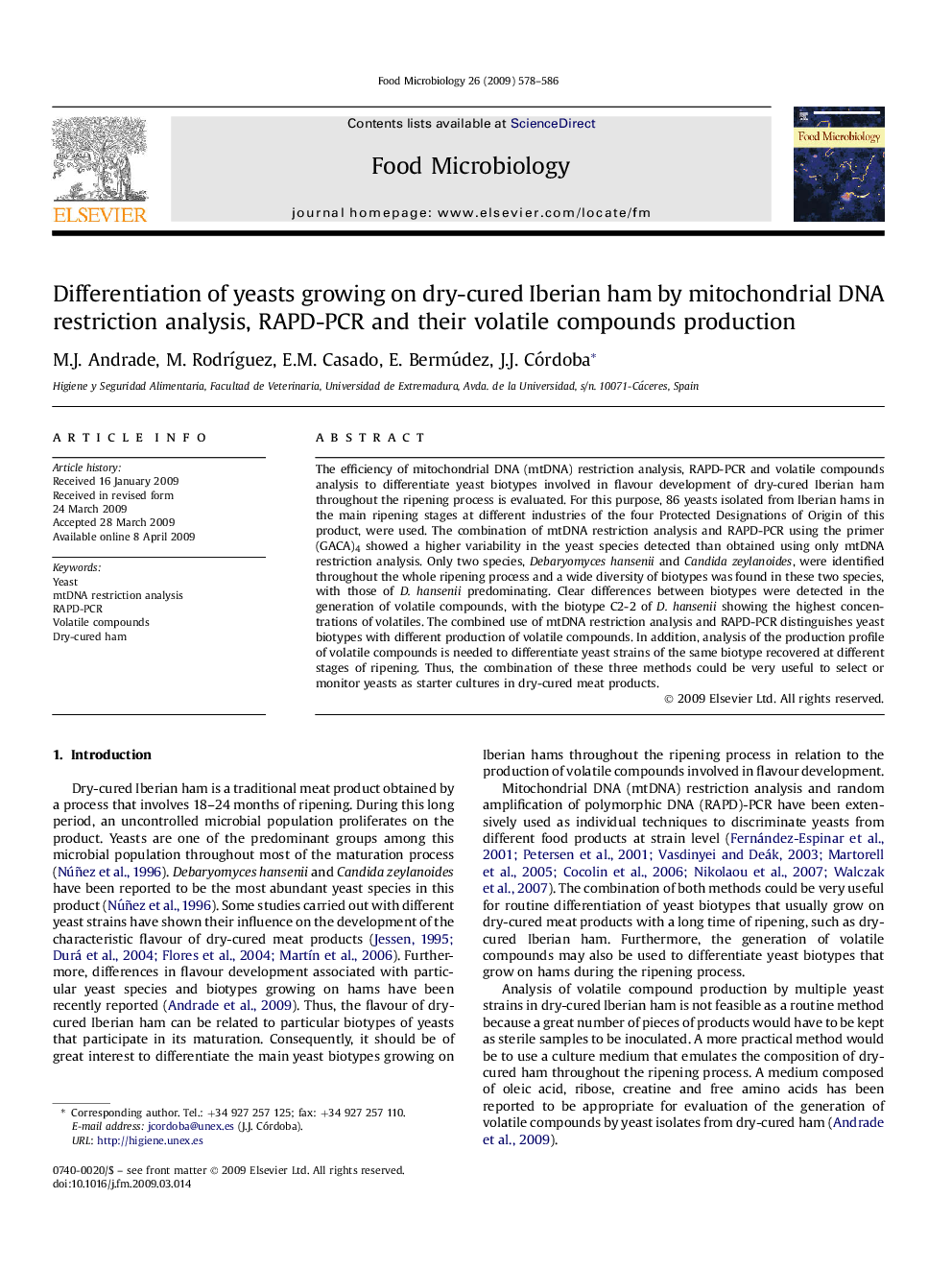| Article ID | Journal | Published Year | Pages | File Type |
|---|---|---|---|---|
| 4363575 | Food Microbiology | 2009 | 9 Pages |
The efficiency of mitochondrial DNA (mtDNA) restriction analysis, RAPD-PCR and volatile compounds analysis to differentiate yeast biotypes involved in flavour development of dry-cured Iberian ham throughout the ripening process is evaluated. For this purpose, 86 yeasts isolated from Iberian hams in the main ripening stages at different industries of the four Protected Designations of Origin of this product, were used. The combination of mtDNA restriction analysis and RAPD-PCR using the primer (GACA)4 showed a higher variability in the yeast species detected than obtained using only mtDNA restriction analysis. Only two species, Debaryomyces hansenii and Candida zeylanoides, were identified throughout the whole ripening process and a wide diversity of biotypes was found in these two species, with those of D. hansenii predominating. Clear differences between biotypes were detected in the generation of volatile compounds, with the biotype C2-2 of D. hansenii showing the highest concentrations of volatiles. The combined use of mtDNA restriction analysis and RAPD-PCR distinguishes yeast biotypes with different production of volatile compounds. In addition, analysis of the production profile of volatile compounds is needed to differentiate yeast strains of the same biotype recovered at different stages of ripening. Thus, the combination of these three methods could be very useful to select or monitor yeasts as starter cultures in dry-cured meat products.
